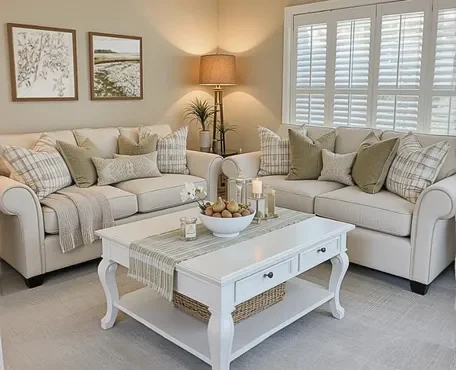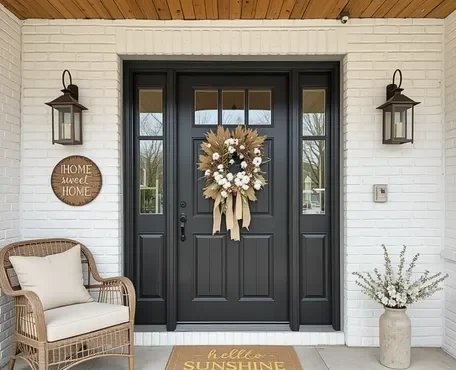
Sentimental possessions often hold a special place in our hearts. These items carry memories, emotions, and stories that make it challenging to part with them. While decluttering can lead to a more organized and serene living space, tackling sentimental possessions can be a daunting task. However, with the right approach, it is possible to declutter and make room for the new while preserving the essence of the past. In this article, we will explore strategies and tips to help you navigate the process of decluttering sentimental possessions.
Decluttering sentimental possessions can be a challenging but ultimately rewarding journey. By understanding your attachment, setting clear goals, categorizing your items, and following strategies like the KonMari method, digitizing memories, and creating memory boxes, you can effectively declutter while preserving the essence of the past. Remember that the goal is not to discard all sentimental possessions but to curate and cherish the most meaningful ones. As you embark on this journey, you’ll find a newfound sense of liberation and appreciation for the memories that truly matter.
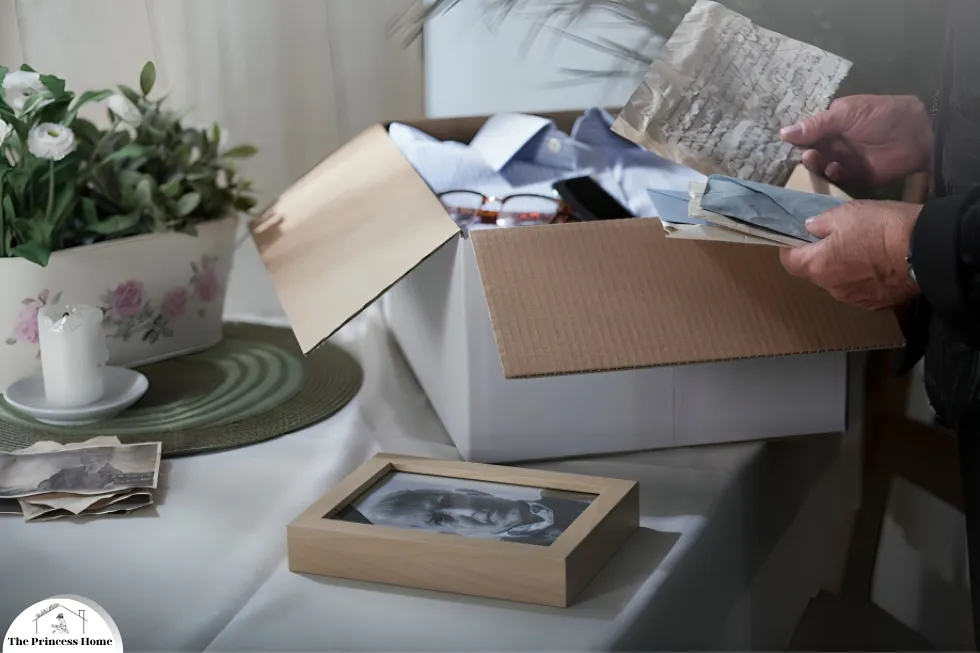
1.Understand Your Attachment
Before diving into decluttering, it’s essential to recognize and understand the nature of your sentimental attachment. What makes these possessions so special? Is it the memories they evoke, the people associated with them, or their historical significance? Identifying the specific reasons behind your attachment can help you make more informed decisions as you declutter.
Once you’ve identified the reasons behind your attachment, you can approach decluttering with more clarity and purpose. For instance, if your attachment is primarily based on memories, you might consider ways to preserve those memories without necessarily keeping physical items. On the other hand, if the attachment stems from the historical significance of an object, you might explore options for donating or archiving it in a way that honors its importance. Understanding the roots of your attachment allows you to prioritize what truly matters and make decisions that align with your values and goals.

2.Set Clear Goals
Setting clear decluttering goals is essential for maintaining focus and motivation. Whether you want to reduce clutter, create more space, or streamline your belongings, having a clear purpose will guide your efforts. You can even establish quantifiable goals, like reducing your sentimental possessions by a certain percentage. This not only provides a clear target but also helps you track your progress and celebrate your achievements along the way.
For example, if you have a collection of sentimental items stored in boxes, your goal might be to reduce the number of boxes by half within the next month. This quantifiable goal gives you a specific target to work towards and a timeline to follow. As you go through each box, you can assess the items based on your attachment and make decisions accordingly. Once you reach your goal, you’ll have successfully decluttered a significant portion of your sentimental possessions, creating more space and organization in your home.

3.Sort and Categorize
Sorting and categorizing your sentimental possessions is an excellent starting point for decluttering. By organizing them into categories such as photographs, letters, trinkets, clothing, and other items, you can break down the task into smaller, more manageable steps. This approach helps reduce overwhelm and allows you to focus on one category at a time. Plus, it enables you to see the extent of your sentimental items and makes it easier to make decisions about each category as you progress through the decluttering process.
For instance, if you’re decluttering your collection of sentimental items, you could start by sorting them into categories. You might gather all your old photographs and albums into one category, letters and cards into another, small trinkets and souvenirs into a third, and so on. This categorization process not only helps you visually see the types of items you have but also makes it easier to tackle one category at a time. It breaks down the task into smaller, more manageable chunks, making the overall decluttering process less overwhelming.

4.The Marie Kondo Method
The Marie Kondo method, also known as the “KonMari” method, is a popular approach to decluttering and organizing pioneered by Marie Kondo, an organizing consultant. The central concept of this method involves holding each item and asking yourself, “Does this spark joy?” If an item does not evoke joy or serve a meaningful purpose in your life, then it may be time to part ways with it.
By focusing on the emotional connection and value that each possession brings, the KonMari method encourages individuals to surround themselves only with items that truly bring them happiness and fulfillment. This approach emphasizes the importance of mindfulness and intentionality in the decluttering process, guiding individuals to make decisions based on their own unique feelings and preferences rather than external pressures or obligations.
Implementing the KonMari method can lead to a more streamlined and harmonious living space, where every item serves a purpose and contributes to a sense of joy and well-being. It’s not just about getting rid of clutter but also about creating a living environment that reflects and supports your ideal lifestyle and values.

5.Digitalize Memories
Digitizing sentimental possessions like photographs and letters is a fantastic way to preserve memories while reducing physical clutter. With the help of scanners, smartphone apps, and cloud storage services, you can easily convert these items into digital format and store them safely. This not only frees up physical space in your home but also provides added protection against damage or loss. Plus, digital copies can be easily organized, shared with loved ones, and accessed from anywhere with an internet connection, allowing you to cherish and revisit your memories whenever you’d like.
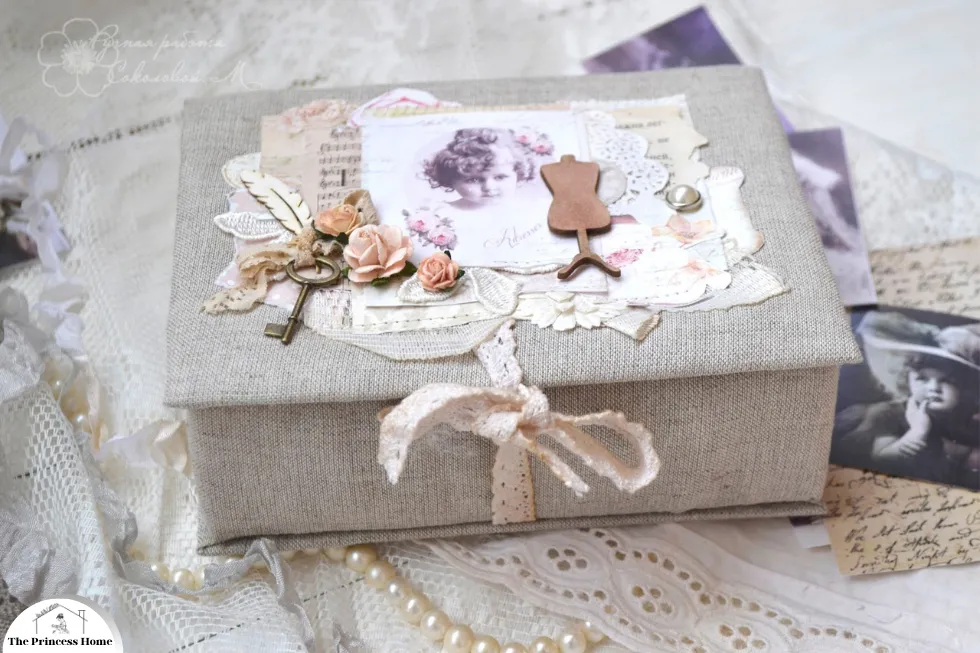
6.Create a Memory Box
If you’re hesitant to part with certain sentimental items, create a memory box. This box can hold a curated collection of your most cherished possessions. Limit the space to a reasonable size to ensure you only keep what truly matters. Creating a memory box is a wonderful way to preserve and cherish your most cherished sentimental items while still decluttering your space.
Here’s an example of how you can create a memory box:
1.Select a Suitable Container:
Choose a box or container that is sturdy, preferably made of archival-quality materials to help protect your items from damage over time. You might opt for a decorative box or a simple storage container, depending on your preference.
2.Curate Your Collection:
Gather your most cherished sentimental items, such as photographs, letters, small trinkets, or keepsakes. Select only those items that hold the most meaning and significance for you. This could include items that evoke strong emotions or remind you of important moments in your life.
3.Limit the Space:
Be mindful of the size of your memory box and set limits on how much you can keep. This will help ensure that you only include items that truly matter to you and prevent the box from becoming cluttered over time. Consider dedicating specific sections or compartments within the box for different types of items to keep them organized.
4.Organize Thoughtfully:
Arrange your items in the memory box in a way that is visually appealing and easy to access. You might choose to group similar items together or arrange them chronologically, depending on your preference. Take your time to arrange the contents of the box thoughtfully, creating a curated collection that brings you joy and nostalgia.
5.Label and Store Safely:
Consider labeling your memory box with a meaningful title or date to help you easily identify its contents. Store the box in a safe and accessible location, such as a closet shelf or under the bed. Make sure to keep it away from direct sunlight, moisture, or extreme temperatures to help preserve the items inside.
By creating a memory box, you can keep your most cherished sentimental items close at hand while still decluttering your space and maintaining a sense of organization and order.

7.Share and Gift
Sometimes, the best way to declutter sentimental possessions is to share them with loved ones. Gifting sentimental items to family and friends can be a heartwarming way to ensure they go to someone who will appreciate them. Sharing sentimental possessions with loved ones can be a meaningful way to declutter while ensuring that these items continue to be cherished and appreciated.
Here’s an example of how you can share and gift sentimental items:
1.Identify Recipients:
Consider who among your family and friends would appreciate and value the sentimental items you’re considering decluttering. Think about the significance of the items and who they might hold meaning for.
2.Personalize the Gifts:
When gifting sentimental items, consider personalizing the experience by sharing stories or memories associated with the items. This adds an extra layer of meaning and helps the recipient understand the significance of the gift.
3.Respect Boundaries:
Be mindful of the preferences and boundaries of the recipients when offering sentimental items. While some may appreciate and welcome the gesture, others may prefer not to accept additional belongings. Respect their decision either way.
4.Coordinate Delivery:
Arrange a time to deliver or send the sentimental items to the recipients. If possible, consider presenting the items in person to facilitate a heartfelt exchange and to share in the joy of passing on meaningful possessions.
5.Stay Connected:
After gifting the sentimental items, stay connected with the recipients and continue to share memories and stories associated with the items. This helps maintain the emotional connection and ensures that the items continue to be appreciated and cherished.
By sharing sentimental possessions with loved ones, you not only declutter your own space but also spread joy and nostalgia to those you care about. It’s a heartwarming way to honor the memories associated with these items while passing on their significance to others.
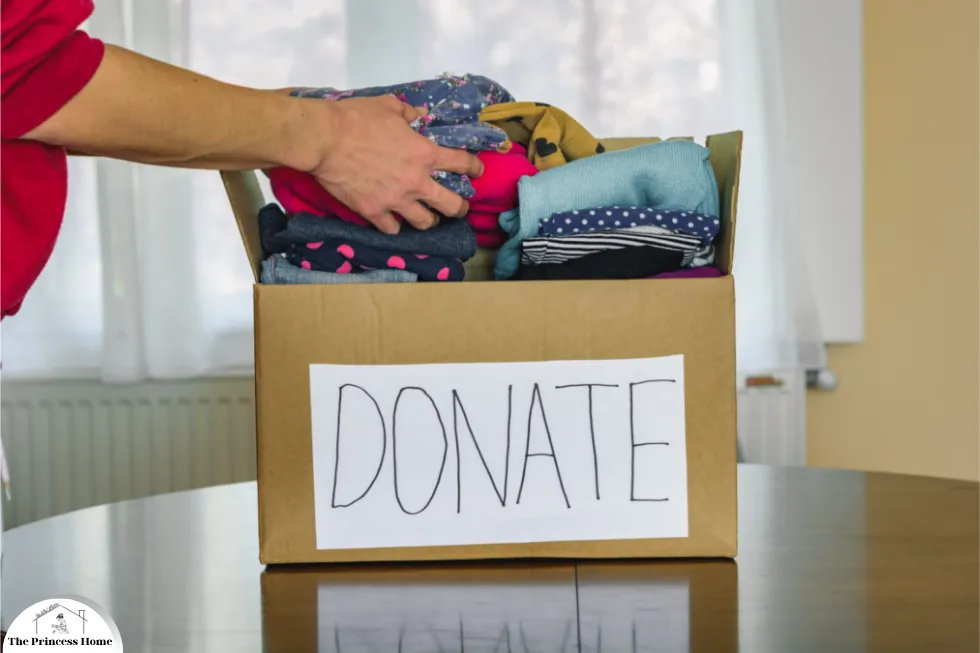
8.Donate or Sell
For items with historical or collector’s value, consider donating or selling them to a museum, charity, or collector. Knowing that your possessions will find new homes where they are valued can ease the emotional burden of decluttering. Donating or selling sentimental items with historical or collector’s value is another thoughtful way to declutter while ensuring that these possessions find new homes where they will be appreciated.
Here’s how you can go about it:
1.Research Potential Recipients: Look for museums, charities, or collectors who may be interested in the specific type of items you’re considering donating or selling. Research their collections or interests to ensure a good match.
2.Contact Potential Recipients: Reach out to the relevant organizations or individuals to inquire about their interest in accepting or purchasing your items. Provide detailed information about the items, including their historical significance or collector’s value.
3.Arrange for Donation or Sale: Once you’ve found a suitable recipient, coordinate the donation or sale process. This may involve arranging for the items to be picked up or delivered, negotiating terms if selling, and completing any necessary paperwork or documentation.
4.Follow Through: Ensure that the donation or sale process is completed smoothly and that the items are transferred to their new homes safely and securely. Keep records of the transaction for your records.
5.Feel Good About Your Decision: Knowing that your sentimental items will be valued and appreciated by their new owners can ease the emotional burden of decluttering. Take pride in knowing that your possessions will continue to be treasured for their historical or collector’s value.
By donating or selling sentimental items with historical or collector’s value, you not only declutter your own space but also contribute to preserving and sharing these valuable pieces of history or collectibles with others who will cherish them. It’s a meaningful way to pass on the legacy of these items while lightening your own load.

9.Take Your Time
Decluttering sentimental possessions can be an emotionally taxing process. Give yourself permission to go at your own pace. You don’t need to tackle it all in one day; set aside dedicated, focused time for the task. decluttering sentimental possessions can indeed be emotionally challenging, and it’s essential to approach it with patience and self-compassion.
Here’s how you can give yourself the time and space you need:
1.Set Realistic Expectations: Understand that decluttering sentimental items may take longer than decluttering other belongings. Give yourself permission to take breaks and acknowledge that it’s okay to feel emotional during the process.
2.Schedule Dedicated Time: Set aside specific blocks of time in your schedule dedicated to decluttering sentimental possessions. This allows you to focus on the task without feeling rushed or overwhelmed.
3.Break It Down: Rather than trying to tackle everything at once, break the decluttering process into smaller, more manageable tasks. Focus on one category or area at a time, and celebrate your progress along the way.
4.Listen to Your Emotions: Pay attention to how you’re feeling as you declutter. If certain items evoke strong emotions, allow yourself to acknowledge and process those feelings. It’s okay to hold onto certain items if they bring you comfort or joy, even if they don’t serve a practical purpose.
5.Practice Self-Care: Be kind to yourself throughout the decluttering process. Take breaks when needed, engage in activities that bring you comfort and relaxation, and lean on the support of friends or family if you need it.
By giving yourself the time and space to declutter sentimental possessions at your own pace, you can approach the process with mindfulness and self-awareness, ultimately leading to a more meaningful and fulfilling outcome.

10.Seek Support
Sometimes, it can be helpful to involve a trusted friend or family member in the decluttering process. They can provide a fresh perspective and emotional support to help you make decisions. seeking support from a trusted friend or family member can be immensely beneficial when decluttering sentimental possessions.
Here’s how they can help:
1.Fresh Perspective: A friend or family member can offer a different viewpoint on your sentimental items. They may notice things or suggest ideas that you hadn’t considered, helping you make more informed decisions about what to keep and what to let go of.
2.Emotional Support: Decluttering sentimental possessions can stir up a range of emotions, from nostalgia to sadness. Having someone there to provide emotional support can make the process feel less daunting and overwhelming. They can offer encouragement, lend a listening ear, and help you navigate any difficult feelings that arise.
3.Accountability: Sometimes, it’s easier to stay focused and motivated when you have someone to declutter with. Your friend or family member can help keep you accountable to your decluttering goals, ensuring that you stay on track and make progress.
4.Shared Memories: Decluttering with a loved one can also be an opportunity to reminisce and share memories together. You can talk about the stories behind certain items, share laughs, and bond over the shared experience of decluttering.
5.Practical Assistance: Depending on the size and scope of your decluttering project, having an extra set of hands can be helpful for sorting, organizing, and packing items. Your friend or family member can help make the process more efficient and manageable.
Overall, involving a trusted friend or family member in the decluttering process can provide valuable support, both emotionally and practically. Their presence can make the experience more enjoyable, less stressful, and ultimately more successful.
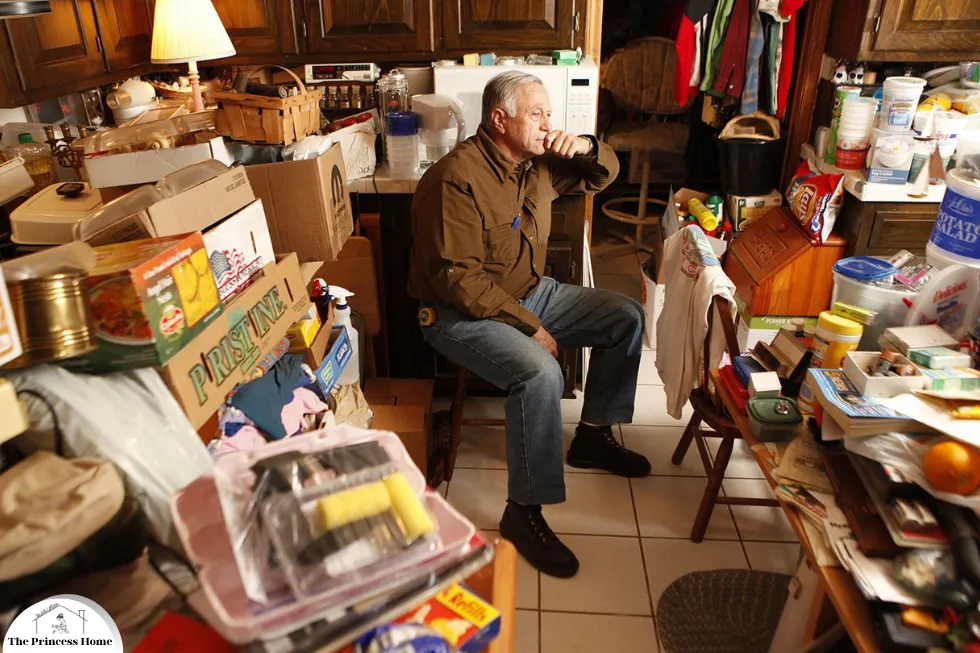
11.Reflect on the Space You’ll Gain
As you declutter, remind yourself of the space and freedom you’ll gain by letting go of items that no longer serve you. Visualize the organized and clutter-free space you’re creating in your home. Reflecting on the space you’ll gain through decluttering can be a powerful motivator to keep you focused and inspired throughout the process.
Here’s how you can harness this reflection:
Visualize the Outcome: Take a moment to envision the organized and clutter-free space you’re working towards. Imagine how it will feel to move through your home without tripping over unnecessary items or feeling overwhelmed by clutter.
Focus on the Benefits: Remind yourself of the benefits of decluttering, such as increased physical space, improved organization, and reduced stress. Think about how these changes will positively impact your daily life and overall well-being.
Set Goals: Establish clear goals for what you hope to achieve through decluttering, whether it’s creating more space in a specific room, simplifying your belongings, or enhancing the functionality of your living environment. Keeping these goals in mind can help you stay motivated and focused on the end result.
Celebrate Progress: Celebrate each step forward you take in your decluttering journey. Whether it’s clearing out a closet, donating a box of items, or organizing a shelf, acknowledge your progress and the space you’re reclaiming in your home.
Embrace the Freedom: Embrace the sense of freedom that comes with letting go of items that no longer serve you. Recognize that by decluttering, you’re creating space for new opportunities, experiences, and memories to enter your life.
By reflecting on the space you’ll gain through decluttering and visualizing the positive changes it will bring to your home and life, you can stay motivated and inspired to continue the process. Keep your goals in mind, celebrate your progress, and embrace the newfound freedom that comes with letting go of clutter.

12.Celebrate Your Progress
After each decluttering session, take a moment to acknowledge your progress. Celebrate the space you’ve reclaimed and the emotional weight you’ve lightened. Celebrating your progress after each decluttering session is essential for maintaining motivation and momentum.
Here are some ways you can acknowledge and celebrate your achievements:
1.Reflect on Accomplishments: Take a moment to reflect on what you’ve accomplished during the decluttering session. Acknowledge the items you’ve sorted through, decisions you’ve made, and the space you’ve cleared.
2.Appreciate the Space: Take a moment to appreciate the physical space you’ve reclaimed in your home. Notice how the cleared areas look and feel lighter, more organized, and more spacious.
3.Express Gratitude: Express gratitude for the progress you’ve made. Appreciate your efforts and commitment to creating a more clutter-free and harmonious living environment.
4.Reward Yourself: Treat yourself to a small reward or indulgence as a way of acknowledging your hard work and dedication. This could be something simple like enjoying a favorite snack, taking a relaxing bath, or watching an episode of your favorite TV show.
5.Share Your Success: Share your decluttering success with friends or family members who have been supporting you along the way. Celebrate your achievements together and bask in the positive energy of your progress.
6.Visualize Future Goals: Use your progress as motivation to continue decluttering in the future. Visualize the goals you’ve set for yourself and the positive impact decluttering will have on your life.
By taking the time to celebrate your progress after each decluttering session, you reinforce your commitment to the process and acknowledge the positive changes you’re making in your home and life. It’s an opportunity to pat yourself on the back and keep the momentum going as you work towards your decluttering goals.
Here are some more tips to help you with decluttering sentimental possessions:
1.Start with Less Sentimental Items:
If you’re new to decluttering sentimental possessions, consider beginning with items that hold less emotional weight. This can help you build confidence and experience in the process before tackling more emotionally charged items.
2.Set a Time Limit:
When working on decluttering, set a time limit for each decluttering session. For example, you might decide to work for one or two hours at a time. This prevents burnout and ensures that you don’t become overwhelmed.
3.Journal About Your Items:
Before parting with a sentimental item, write down the memories and emotions associated with it in a journal. This can serve as a way to preserve the stories and feelings attached to the item, even if you decide to let it go.
4.Prioritize Practicality:
While sentimentality is important, it’s also crucial to consider the practicality of an item. If an item is collecting dust and not serving any purpose, it might be time to let it go.
5.Create a Visual Inventory:
Take photos or create a digital catalog of your sentimental items. This way, you can keep a record of the items you’re parting with without needing to physically store them.
6.Use Display or Organizational Solutions:
If you have items you’d like to keep but don’t want them cluttering your space, invest in attractive display or organizational solutions. This can help you showcase your sentimental items in a more organized and visually appealing way.
7.Trust Your Instincts:
Your gut feeling about an item is often a good indicator of whether it’s truly meaningful to you. Trust your instincts and don’t feel pressured to keep something simply because it was a gift or has sentimental value.
8.Embrace Minimalism:
Consider adopting a minimalist lifestyle. Minimalism encourages the removal of excess possessions, including sentimental ones, in favor of a simpler, more intentional way of living.
9.Revisit Regularly:
Decluttering is an ongoing process. Set a schedule to revisit your sentimental items every few months or once a year. As time passes, your emotional attachment to certain items may change, making it easier to decide whether to keep or part with them.
10.Seek Professional Help:
If you find it exceptionally challenging to declutter sentimental possessions due to deep emotional ties or hoarding tendencies, consider consulting a professional organizer or therapist who specializes in decluttering and mental health.
11.Donate to a Meaningful Cause:
Donate your sentimental items to a charity or cause that holds personal significance to you. Knowing that your items are making a positive impact can make the process of parting with them easier.
12.Be Kind to Yourself:
Remember that decluttering is a personal journey, and it’s perfectly okay to keep items that bring you joy and comfort. Be kind to yourself and make decisions that align with your values and emotional well-being.
In conclusion, decluttering sentimental possessions is a process that requires self-awareness, thoughtful decision-making, and patience. By applying these additional tips alongside the ones previously mentioned, you can successfully declutter your sentimental items while preserving the memories and emotions that matter most to you.
Here are some frequently asked questions related to decluttering sentimental possessions
Q1: Why is it so hard to declutter sentimental possessions?
A1: Decluttering sentimental possessions can be challenging because these items often hold deep emotional connections and memories. Parting with them can feel like letting go of a piece of your history. It’s essential to acknowledge these emotions and find a balance between decluttering and preserving meaningful memories.
Q2: How do I decide what sentimental items to keep and what to let go of?
A2: When deciding what to keep, consider the emotional significance of the item. Ask yourself if it truly brings you joy and serves a meaningful purpose in your life. If not, it may be time to part with it. Additionally, consider the practicality of the item and whether it adds value to your daily life.
Q3: Can I keep all my sentimental items in a memory box?
A3: While memory boxes can be a great way to curate and preserve sentimental items, it’s essential to keep the box manageable in size. Limit the space to a reasonable extent so that you prioritize only the most cherished possessions. You may still need to make choices about what to include.
Q4: How can I involve my family in the decluttering process when some items have shared sentimental value?
A4: If you have items with shared sentimental value, engage in open and honest discussions with your family. Try to reach a consensus about what to keep and what to let go of. This collaborative approach can help ensure that everyone’s feelings and memories are considered.
Q5: What should I do with sentimental items that are deteriorating or damaged?
A5: If you have sentimental items that are deteriorating or damaged, consider repairing or restoring them if they hold significant value. If restoration is not possible or practical, take photographs of these items or document them in some way to preserve the memories associated with them.
Q6: Is it okay to keep sentimental items that I don’t use or display regularly?
A6: It’s perfectly acceptable to keep sentimental items that you don’t use or display regularly, as long as they hold genuine value to you. Consider finding creative ways to store or organize these items, such as using decorative boxes or organizational solutions.
Q7: How do I deal with guilt when decluttering sentimental possessions that were gifts from loved ones?
A7: Letting go of gifts from loved ones can be emotionally challenging. Remember that the value of a gift lies in the sentiment behind it, not in the physical item. You can keep the memory of the gesture without holding onto the item. Express gratitude and consider gifting or donating the item to someone who can use it.
Q8: What if I regret decluttering a sentimental item later on?
A8: Regret is a common concern when decluttering sentimental possessions. To minimize this, start slowly and give yourself time to reflect on your decisions. If you do regret letting go of an item, remember that you can’t change the past, but you can focus on the memories and stories associated with it.
Q9: Are there any professional services that can help with decluttering sentimental possessions?
A9: Yes, there are professional organizers and therapists who specialize in decluttering and managing sentimental attachment. They can provide guidance, support, and strategies to help you navigate the emotional aspects of decluttering.
Q10: How often should I revisit my sentimental items to declutter and reevaluate my collection?
A10: It’s advisable to revisit your sentimental items every few months or at least once a year. As time passes, your emotional attachment may change, and you may find it easier to make decisions about what to keep or let go.
Remember that decluttering sentimental possessions is a personal journey, and there’s no one-size-fits-all approach. The key is to find the balance that works best for you and your emotional well-being.

